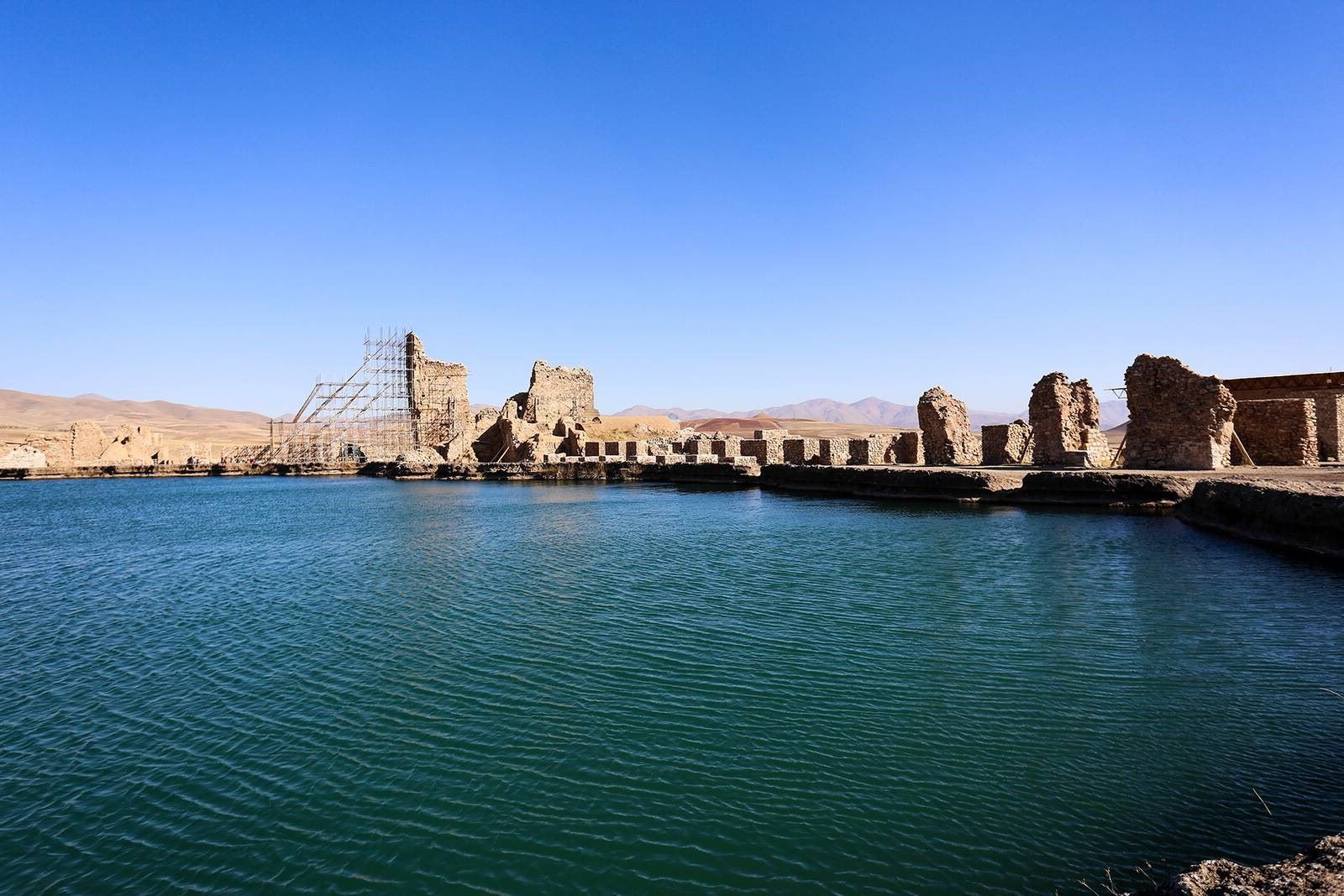
Takht-e Soleyman, also known as the Throne of Solomon, is a stunning archaeological site in Iran. This ancient complex holds a treasure trove of history and mystery. But what makes it so special? Takht-e Soleyman is a UNESCO World Heritage site, renowned for its unique blend of Zoroastrian and Sassanian architecture. Nestled in the mountains, it features a sacred lake, fire temple, and royal palace ruins. The site dates back to the 3rd century AD, offering a glimpse into ancient Persian civilization. Whether you're a history buff or just curious, these 16 facts about Takht-e Soleyman will leave you amazed.
What is Takht-e Soleyman?
Takht-e Soleyman, also known as the Throne of Solomon, is a historical site in Iran. This ancient complex holds significant cultural and religious importance. Let's dive into some fascinating facts about this UNESCO World Heritage Site.
Historical Significance
Takht-e Soleyman has a rich history that dates back thousands of years. Here are some key historical facts:
-
Ancient Origins: The site dates back to the Sassanian Empire, which ruled from 224 to 651 AD. It was a major religious center during this period.
-
Zoroastrian Temple: It housed one of the most important Zoroastrian fire temples. The temple was dedicated to the deity Ahura Mazda.
-
Mongol Influence: In the 13th century, the Mongols built a palace on the site, adding to its historical layers.
Architectural Marvels
The architecture of Takht-e Soleyman is a testament to the ingenuity of ancient builders. Here are some architectural highlights:
-
Oval Platform: The site is built on an oval platform, which is about 350 meters long and 150 meters wide.
-
Fortified Walls: The complex is surrounded by a 13-meter-high wall, which was constructed to protect it from invaders.
-
Lake in the Center: A natural lake, believed to be sacred, lies at the center of the complex. The lake is fed by a spring and has a constant temperature of 21°C.
Religious Importance
Takht-e Soleyman holds great religious significance for various cultures and religions. Here are some religious facts:
-
Fire Temple: The fire temple at Takht-e Soleyman was one of the three Great Fires of the Zoroastrian religion.
-
Christian Influence: During the Byzantine era, a church was built on the site, indicating its religious diversity.
-
Solomon's Connection: Local legends associate the site with King Solomon, although there is no historical evidence to support this.
UNESCO World Heritage Site
Takht-e Soleyman's cultural and historical value has been recognized globally. Here are some facts about its UNESCO status:
-
World Heritage Status: It was designated a UNESCO World Heritage Site in 2003.
-
Criteria for Selection: The site was selected based on criteria (i), (ii), (iii), and (iv), which recognize its cultural significance, architectural innovation, and historical importance.
Archaeological Discoveries
Archaeologists have made numerous discoveries at Takht-e Soleyman. Here are some notable finds:
-
Artifacts: Various artifacts, including pottery, coins, and inscriptions, have been unearthed, providing insights into the site's history.
-
Structures: Excavations have revealed the remains of several structures, including a royal palace, a fire temple, and a church.
Natural Features
The natural features of Takht-e Soleyman add to its allure. Here are some natural facts:
-
Geothermal Activity: The lake at the center of the site is fed by a geothermal spring, which maintains a constant temperature year-round.
-
Scenic Beauty: The site is surrounded by stunning landscapes, including mountains and valleys, making it a picturesque location.
Cultural Impact
Takht-e Soleyman has had a lasting impact on the culture and traditions of the region. Here are some cultural facts:
- Local Legends: The site is steeped in local legends and folklore, which add to its mystique and cultural significance.
Final Glimpse at Takht-e Soleyman
Takht-e Soleyman stands as a testament to ancient Persian ingenuity and spirituality. This UNESCO World Heritage site, nestled in Iran's West Azerbaijan Province, offers a unique blend of history, architecture, and natural beauty. From its origins as a Zoroastrian fire temple to its later use by the Mongols, the site has layers of stories waiting to be uncovered. The central lake, believed to have mystical properties, adds an element of wonder. Visiting Takht-e Soleyman isn't just a trip through time; it's an experience that connects you to a rich cultural heritage. Whether you're a history buff, an architecture enthusiast, or someone seeking a deeper understanding of ancient civilizations, this site has something for everyone. So, next time you're planning an adventure, consider adding Takht-e Soleyman to your list. You won't regret it.
Was this page helpful?
Our commitment to delivering trustworthy and engaging content is at the heart of what we do. Each fact on our site is contributed by real users like you, bringing a wealth of diverse insights and information. To ensure the highest standards of accuracy and reliability, our dedicated editors meticulously review each submission. This process guarantees that the facts we share are not only fascinating but also credible. Trust in our commitment to quality and authenticity as you explore and learn with us.


